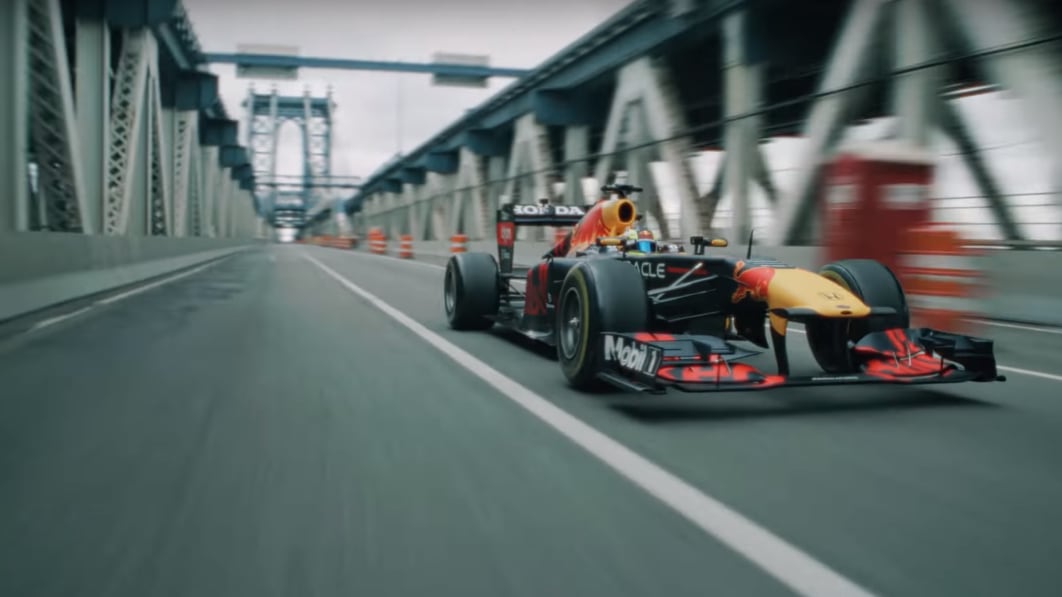
According to Google Maps, the drive from New York City to Miami should take about 19 hours. That’s if you average 67 miles per hour in your sensible family hauler. Including stops for fuel and food, that means you’d have to moving at a clip of about 75 mph on the freeway. If you had something speedier, say, a Red Bull Formula 1 car, it would actually be possible cover 1,250 miles in 11 hours.
That’s probably way more seriousness than the creators of Red Bull’s latest video ever intended. The Miami Grand Prix promo is a tongue-in-cheek look at what would happen if Red Bull driver Sergio “Checo” Pérez really did have to drive from NYC to Miami in his F1 racer. It begins with a call from team principal Christian Horner, who tells Pérez to get to Miami by May (the inaugural race in Florida is scheduled for May 8). Over the din of New York sirens, Pérez mistakes “May” as “today” and is, as they say, off to the races.
We get a lot of entertaining scenes of a Red Bull RB7 just ripping through the streets of the Big Apple. Naturally, he stops at a Chinatown bodega to pick up a Red Bull before his epic road trip and walks out to see a parking ticket — or “summons” in local parlance — in the cockpit. There’s also a pit stop in front of a giant Tag Heuer billboard, as it’s another one of the major sponsors for the team.
If we want to pick nits, the car is technically an older machine from 2011, powered by a Renault engine from Formula 1’s V8 era. Though it’s been re-liveried with the graphics of the current Honda-powered RB16B, including “H” logos.
While the 11-minute (11 is Pérez’s racing number) video is entertaining, we are somewhat disappointed that it skips from New York right to Florida. What’s a road trip along I-95 without a stop at South of the Border?
In the Sunshine State, Pérez encounters a number of other Red Bull athletes from the worlds of skateboarding, wakeboarding and tennis, as well as Dolphins cornerback Byron Jones. Mostly, though, it’s just fun to see an F1 car on public roads, bouncing over imperfections like a Shake Weight.
Of course, in real life the car would have had to stop for fuel about 7 or 8 times, and the drive to Miami would have exceeded even the longest race by over 1,000 miles. Pérez also would have had to change tires several times, as the average F1 tire isn’t designed to last more than a couple hundred miles. Assuming he had pit crews stationed every 200 miles or so, and that our nation’s crumbling roads didn’t jolt the car into pieces or turn Pérez’s butt into raw hamburger, an 11-hour run is theoretically doable. Just don’t try it.
